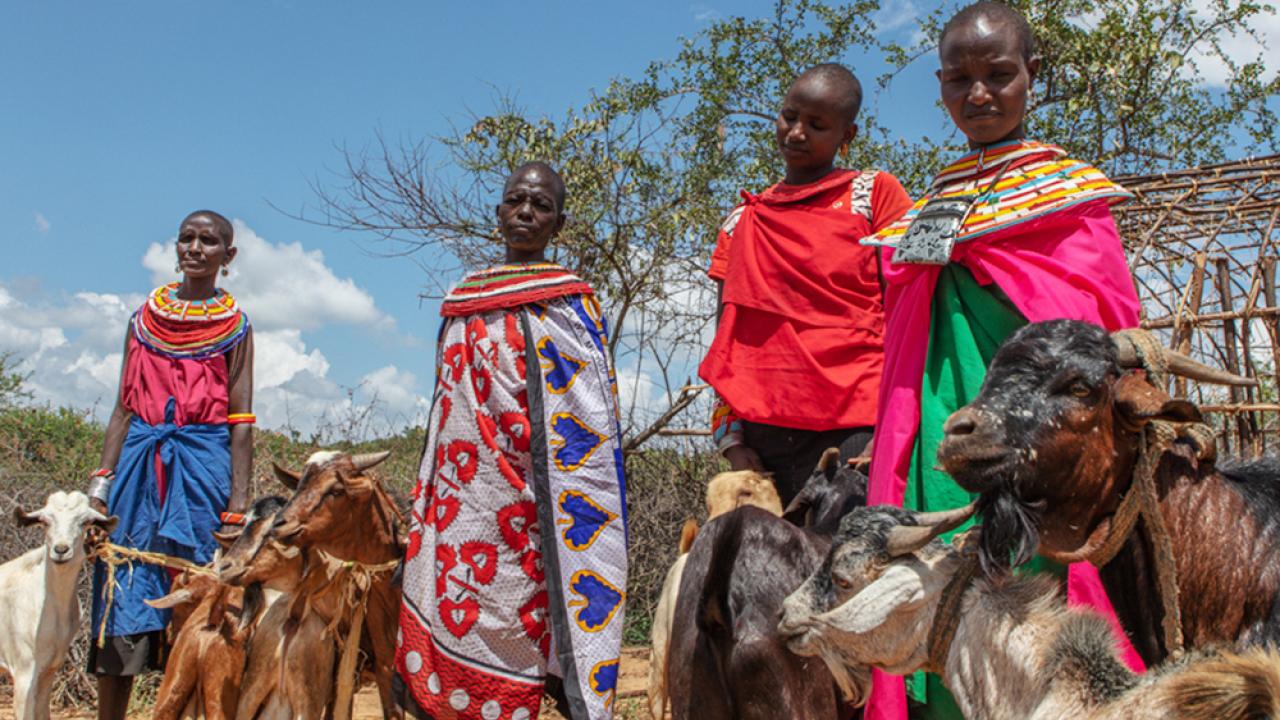
How Digital Technology Is Reshaping Rural Microfinance
When M-Pesa launched as a mobile money service in Kenya in 2007, it quickly extended banking and money transfers to remote rural areas where there were no brick-and-mortar banks. Today, M-Pesa is a well-known digital technology that transformed financial services for underserved rural families in east Africa.
With recent growth in other digital technologies, what other development opportunities are possible and what are some of the limitations? A new paper co-authored by MRR Innovation Lab director Michael Carter and Virginia Tech economist Elinor Benami explores how digital technologies like mobile phones and satellites have created new ways for rural families in developing countries to access savings, credit and insurance. The paper also explains the need to ensure that these services do not reproduce or amplify existing inequalities.
“When most people think of microfinance, they think of group-lending programs or maybe even mobile money systems like M-Pesa,” said Carter. "But there are other opportunities with mobile phones, satellites and other digital technologies to enhance access to small scale financial services to low-wealth rural households in developing countries.”
Rural Opportunities and Demonstrated Impact with Digital Technologies
The paper reviews research on multiple types of small-scale financial services and explores how the expanding use of digital technology can extend their reach. The opportunities are growing. Mobile phone subscriptions have doubled over the past two decades. In 2018, over 200 earth observation satellites were launched, which is more than twenty times the number launched in 2000.
“Mobile phones have helped bridge physical distances to coordinate social and economic life,” said Benami, an assistant professor of agricultural and applied economics at Virginia Tech. “At the same time, data generated from digital systems like mobile phone metadata and satellite observations are starting to offer clues about the conditions of crops, cash-flows and communities.”
For example, evidence from Kenya, Rwanda and Tanzania suggest that mobile money systems have helped people manage shocks with remittances from family and friends. These systems also make it possible for insurance companies to quickly and cheaply provide payments to isolated families for losses. Previously, these payments would be delayed or would not come at all.
In addition, new sources of data for credit scoring may be able to level the playing field for borrowers by lowering the cost for companies to assess credit-worthiness. For example, a person who adds minutes to her cell phone on a regular schedule is more likely to have the steady income needed to repay a loan. A lender could use this type of metadata to predict the likelihood a borrower will make payments. A report from Tanzania suggests that digital data analytics could result in 40 percent cost reductions for loans.
“This is one example of a so-called digital footprint that can help expand access to credit at all and/or lower interest rates,” said Carter.
Satellite technologies have improved greatly in recent years, particularly in the degree of detail they can provide about conditions on the ground. Twenty years ago, satellites crunched data on vegetation growth into pixels of 25 square kilometers, which is much bigger than most villages. Today’s satellite pixels are 10 square meters, which is small enough to capture an individual farmer’s field.
This higher resolution creates new ways to support struggling families. The Kenya National Drought Management Authority targets aid when satellites detect drought. Insurance companies are using this data to create a new generation of insurance products that can be combined with mobile money to simplify how families purchase coverage and receive payments. The higher resolution data have also improved the quality of contracts available.
Enhancing Accessibility and Equity of Digital Microfinance for Rural Families
Despite their promise to address important challenges of information and money flow, concerns about digital technologies exist, too. For example, current mobile money products can vary substantially in quality in terms of transparency about fees as well as fundamental security vulnerabilities. Predatory lending practices still exist, and insurance companies' enthusiasm to embrace satellite-based insurance for its high growth potential has not always included care that the new products will perform as promised.
“Some microsavings, credit and insurance programs that employ novel technologies have shown promise to relax the real constraints of poor transportation networks, small scales, or risk,” said Benami, “but, they raise the specter of being even more exclusionary if not done well.”
A few new initiatives seek to ensure these systems redress rather than amplify existing disparities. In 2016, the Center for Effective Global Action (CEGA), with support from the Bill & Melinda Gates Foundation, started the Digital Credit Observatory at UC Berkeley to conduct rigorous research on the impacts of digital credit products in emerging markets.
Launched in 2018, the GSMA Mobile Money Certification seeks to establish a series of standards to enhance the transparency and reliability of those systems. The International Finance Corporation (IFC) has also started to collect materials and reports across a suite of the emerging Digital Financial Services.
In 2018, USAID and UC Davis launched the Quality Index Insurance Certification (QUIIC) initiative for East Africa to certify that products don’t leave families worse off for having purchased them. Carter leads QUIIC and developed the Minimum Quality Standard (MQS) for index insurance that is at the foundation of the certification’s quality measure. To date, QUIIC is the only program dedicated to evaluating and enhancing the quality of index insurance products.
The paper, “Can Digital Technologies Reshape Rural Microfinance? Implications for Savings, Credit, & Insurance is available in the journal Applied Economic Perspectives and Policy.
